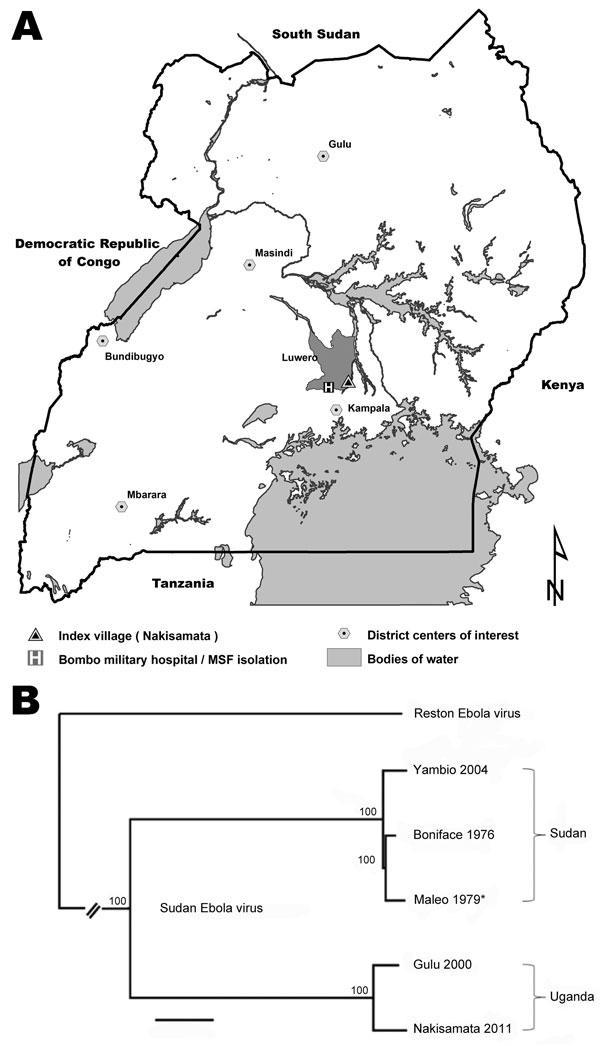Reemerging Sudan Ebola Virus Disease in Uganda, 2011
Trevor Shoemaker, Adam MacNeil

, Stephen Balinandi, Shelley Campbell, Joseph Francis Wamala, Laura K. McMullan, Robert Downing, Julius Lutwama, Edward Mbidde, Ute Ströher, Pierre E. Rollin, and Stuart T. Nichol
Author affiliations: US Centers for Disease Control and Prevention, Entebbe, Uganda (T. Shoemaker, S. Balinandi, R. Downing); Centers for Disease Control and Prevention, Atlanta, Georgia, USA (A. MacNeil, S. Campbell, L.K. McMullan, U. Ströher, P.E. Rollin, S.T. Nichol); Ministry of Health, Kampala, Uganda (J.F. Wamala); and Uganda Virus Research Institute, Entebbe (J. Lutwama, E. Mbidde)
Main Article
Figure 1

Figure 1. . . Sudan Ebola virus in Uganda, 2011. A) Geographic locations of Nakisimata village and Bombo Military Hospital with the isolation facility established by Médecins Sans Frontières (MSF) relative to locations where Sudan Ebola virus (SEBOV) was isolated during the current and previous outbreaks in Uganda. Scale bar indicates kilometers. B) Maximum likelihood tree obtained from full length sequences of SEBOV strains Nakisamata (JN638998), Boniface (FJ968794), Gulu (AY729654), and Yambio (EU338380) and the polymerase gene (*) of Maleo (U23458); full-length Reston Ebola virus (REBOV) (AY769362) is included as an outgroup. Bootstrap values listed at the nodes provide statistical support for 1,000 replicates. Scale bar indicates 0.006 substitutions per site.
Main Article
Page created: August 16, 2012
Page updated: August 16, 2012
Page reviewed: August 16, 2012
The conclusions, findings, and opinions expressed by authors contributing to this journal do not necessarily reflect the official position of the U.S. Department of Health and Human Services, the Public Health Service, the Centers for Disease Control and Prevention, or the authors' affiliated institutions. Use of trade names is for identification only and does not imply endorsement by any of the groups named above.
